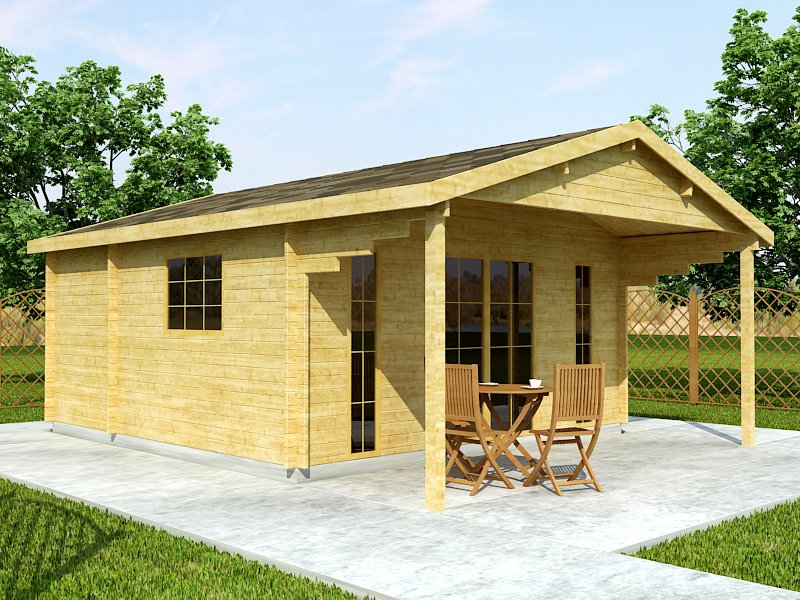
Glulam Houses and Building Codes to Know
Design
As builders and designers seek alternatives to steel, glulam can provide a strong yet beautiful alternative. Pound for pound, it is stronger than steel while also being easier to shape into more shapes than traditional lumber allowing architects, engineers, and builders to explore designs that otherwise wouldn’t be achievable with solid section timbers.
Glulam is composed of individual wood laminations bonded together using durable moisture-proof adhesives for maximum strength, stiffness, and durability. As well as being attractive, glulam often proves cost-effective compared to other structural materials due to reduced maintenance requirements over time.
Engineered wood products are eco-friendly products with a reduced carbon footprint than both steel and concrete, while its natural insulation properties help reduce energy costs and meet sustainability standards for LEED certifications projects.
While glulam may be best known for its use in eye-catching applications such as vaulted ceilings and other open spaces, its versatility also extends into everyday applications including purlins, ridge beams, garage door headers and floor and roof beams – not forgetting arches in residential and commercial construction as well as bridges, utility poles and cross arms.
Aesthetically, glulam is an aesthetic building material with natural colors and grain patterns that bring warmth into interior and exterior spaces. Additionally, its versatility means it can be stained, painted or clear coated to match or enhance its aesthetics in projects of all kinds; cut and shaped using hand or mechanical tools to form unique designs; holes can even be cut out with professional assistance to meet design specifications.
Glulam lumber stands out from traditional lumber in that it does not experience movement during installation, making it simpler for contractors and builders to connect the beams to other building components such as concrete slabs or sheathing. Furthermore, its environmental resistance includes chemicals and water damage resistance; furthermore its dimensional stability prevents twisting or warping over time thus increasing durability of structures built from it.
Materials
Glulam is an engineered wood structure constructed by laminating multiple laminations of lumber together using strong, high-strength adhesives. Glulam offers extreme weatherproofing capabilities while adding an aesthetic element that complements natural beauty in buildings. Architects and engineers can utilize glulam’s flexibility when designing structures; architects can utilize it for creating stunning building designs that uplift and inspire.
Glulam stands out from other building materials by being highly durable and requiring only minimal upkeep over its lifespan, making it an attractive choice for commercial and residential construction projects that will stand the test of time. Furthermore, its sustainable nature creates long-term value while simultaneously benefiting the environment.
Aesthetics is also an important consideration when selecting building materials, and glulam beams make an excellent choice for projects requiring exposed wood beams. Their natural wood appearance adds warmth and appeal to spaces, making them more inviting for their occupants. Furthermore, its flexibility allows it to be formed into curves or angles difficult to attain with traditional solid wood – making glulam an excellent choice for wedding chapels, ballrooms and other unique architectural structures.
With its higher strength-to-weight ratio than other construction materials, glulam boasts a powerful ability to span great distances without needing support structures – this enables architects and designers to design open, spacious buildings without columns or obstructions. Recently it has become popular for contemporary home projects featuring vaulted ceilings made from glulam; its sculptural quality makes it the ideal material for bringing the beauty of nature indoors.
Gulam is not only environmentally-friendly but an economical option for builders as well. While more costly than other materials, its increased costs are offset by the decreased need for support structures. Furthermore, it is easy to transport and install on site – the frames must be protected during construction to prevent damage; usually unwrapping will take place nearing completion when fixtures and fittings can be added.
Construction
Glulam is an extremely durable construction material that allows architects to craft unique shapes with it, such as impressive cantilevers or long spans. Due to its flexibility, less bracing or support beams are needed than with other timbers; creating an open feel in any given space and saving costs at the same time.
Gulam offers more than aesthetic appeal; it also possesses excellent fire resistance and offers outstanding strength for its weight, helping reduce damage during construction as well as risk of structural failure. Furthermore, its resilience against moisture exposure and chemicals makes glulam less vulnerable to fungal and insect attacks than other construction materials.
Gulam is an increasingly popular material choice for residential and commercial building, bridges, and industrial applications ranging from aesthetic value to strength. From residential projects to warehouses to office environments and seismic zones – glulam’s strength and stability allow it to withstand even the harshest environments found within warehouses and offices while its structural integrity also lends it an ideal choice. Furthermore, large commercial projects often use it due to its aesthetic value.
Gulam’s high density allows it to withstand greater loads than other building materials while remaining flexible and aesthetically pleasing. This feature makes glulam an invaluable component, as its elastic nature enables it to support more building materials than ever. Furthermore, its natural insulating properties help provide residents with more comfortable living environments while simultaneously lowering heating/cooling costs.
Glulam requires minimal upkeep during its long lifespan, which may reach decades or centuries with proper care and protection. Regular inspections and occasional cleaning should suffice to maintain its appearance and integrity; furthermore, its environmental friendliness contributes to forest preservation efforts as well as sustainable timber industry operations.
Traditional timber framing remains an attractive choice for residential construction, yet more homeowners are exploring innovative ways of using glulam framing techniques in their designs. Carpenter Oak has been involved with various glulam-framed projects such as Manor House Glulam Extension and Hart House; both include contemporary extensions to listed country homes; the former provides modern living space while Hart House provides stunning black oak glulam living with floor to ceiling windows that offer uninterrupted views.